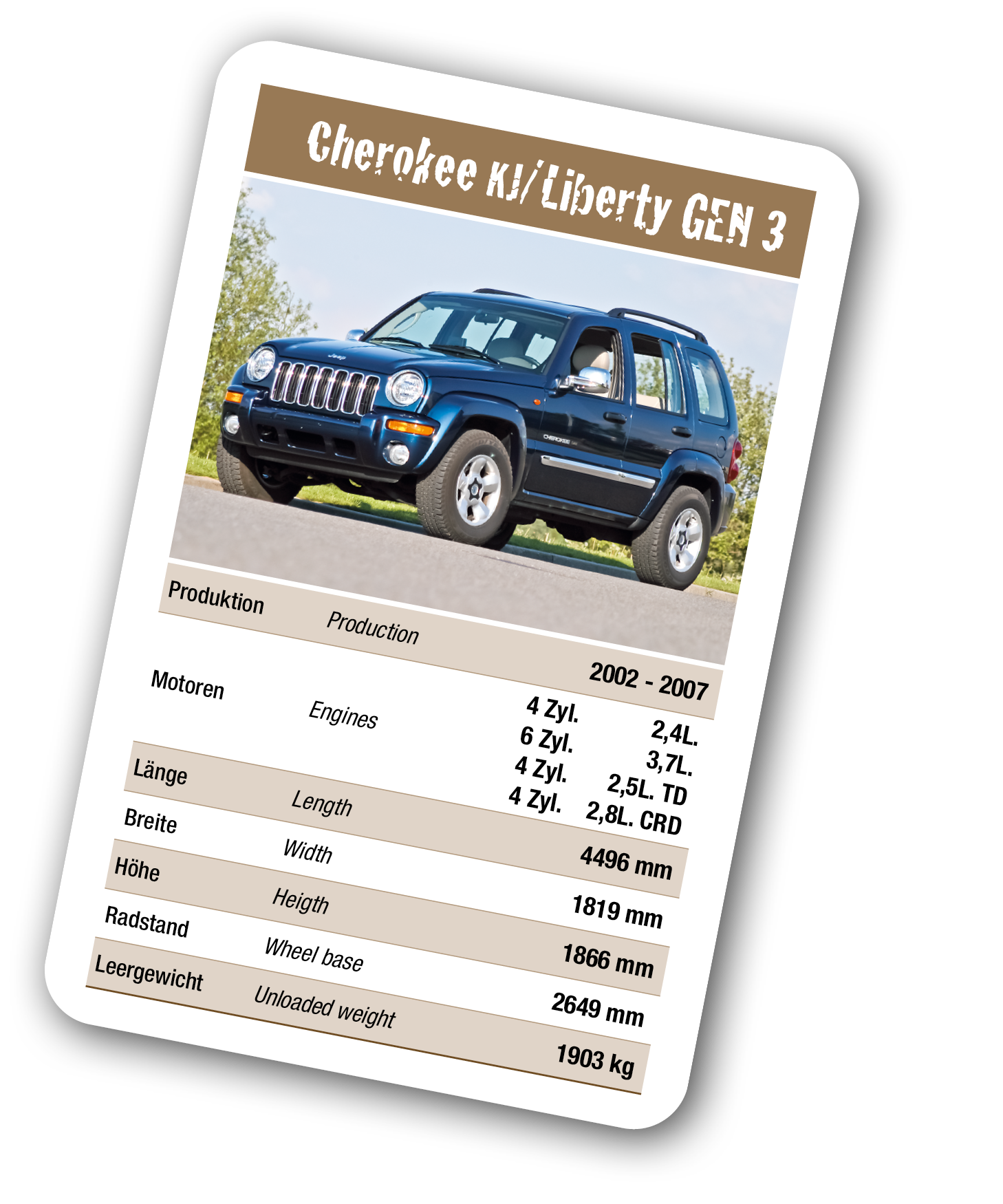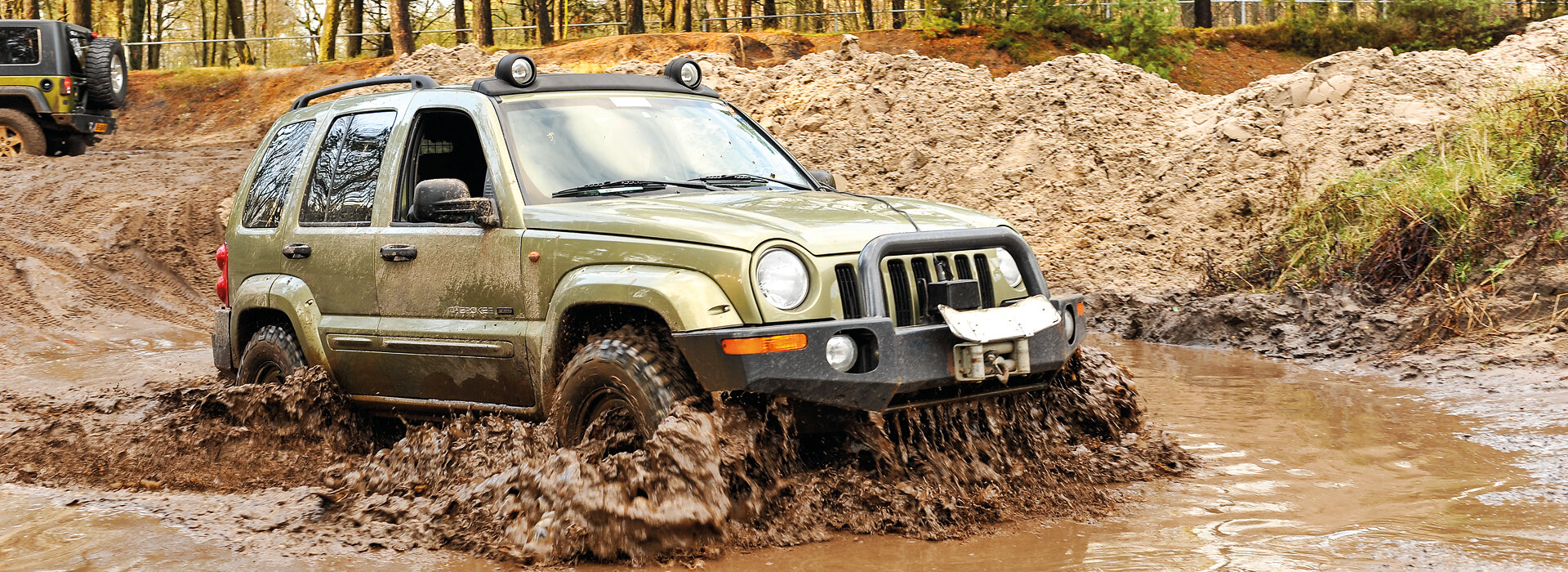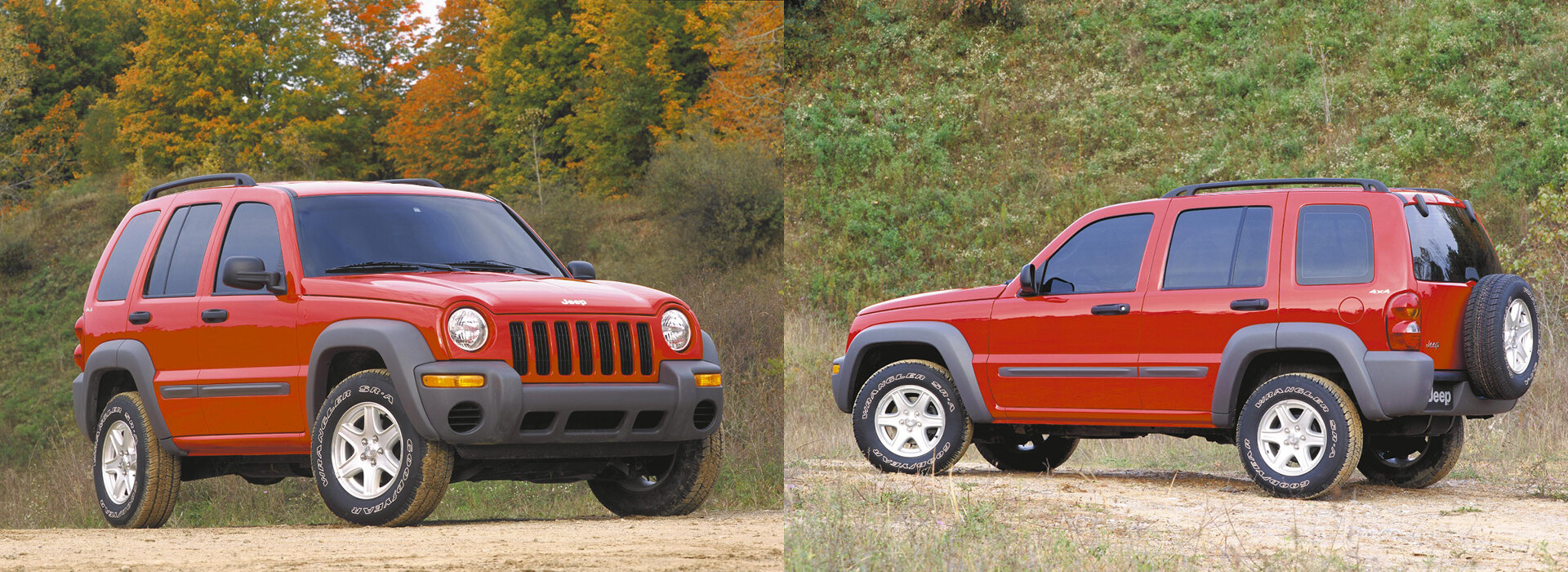Cherokee KJ
2002 - 2007
The Jeep Cherokee was obviously driven through a wind tunnel prior to the introduction of the new model in 2002. Its square-edged identity evidently gave way to gentle curves, which is probably why it has carried the name Liberty in the USA since then. But over here it still remained an Indian going under the name of Cherokee.
A technical revolution took place below its smooth surface. It started with the bodywork, which was now self-supporting and thus banished the traditional box-section frame. The fixed front axle was also sent into retirement. The Liberty & Cherokee KJ now had double wishbones and coils. The fixed rear axle remained, but as at the front there were rear coil springs offering greater comfort.
Parts of the drive technology also corresponded to what was state-of-the-art for the new millennium.
The four-cylinder gasoline engine with 2429 cm³ had two overhead camshafts, four valves per combustion chamber and 147 HP (108 kW). Its colleague, the turbodiesel engine with 2499 cm³, was not given four-valve technology but did generate 143 HP (105 kW) thanks to turbocharging. The 2.8 liter CRD with 150 PS (110 kW) came next. The most powerful unit was a V6 gasoline engine with 3698 cm³ and 211 HP (155 kW).
Power transmission to the wheels was effected either via a five-speed manual gearbox or via a four-speed automatic gearbox. The Cherokee was available with rear-wheel drive and also with four-wheel drive, and customers were able to choose between part-time and permanent 4x4 drive with central locking.
A technical revolution took place below its smooth surface. It started with the bodywork, which was now self-supporting and thus banished the traditional box-section frame. The fixed front axle was also sent into retirement. The Liberty & Cherokee KJ now had double wishbones and coils. The fixed rear axle remained, but as at the front there were rear coil springs offering greater comfort.
Parts of the drive technology also corresponded to what was state-of-the-art for the new millennium.
The four-cylinder gasoline engine with 2429 cm³ had two overhead camshafts, four valves per combustion chamber and 147 HP (108 kW). Its colleague, the turbodiesel engine with 2499 cm³, was not given four-valve technology but did generate 143 HP (105 kW) thanks to turbocharging. The 2.8 liter CRD with 150 PS (110 kW) came next. The most powerful unit was a V6 gasoline engine with 3698 cm³ and 211 HP (155 kW).
Power transmission to the wheels was effected either via a five-speed manual gearbox or via a four-speed automatic gearbox. The Cherokee was available with rear-wheel drive and also with four-wheel drive, and customers were able to choose between part-time and permanent 4x4 drive with central locking.



